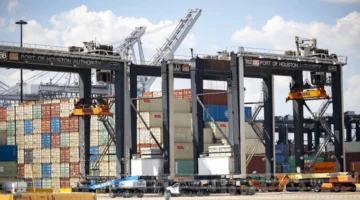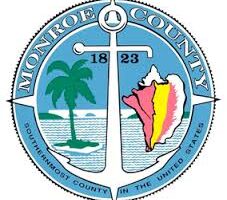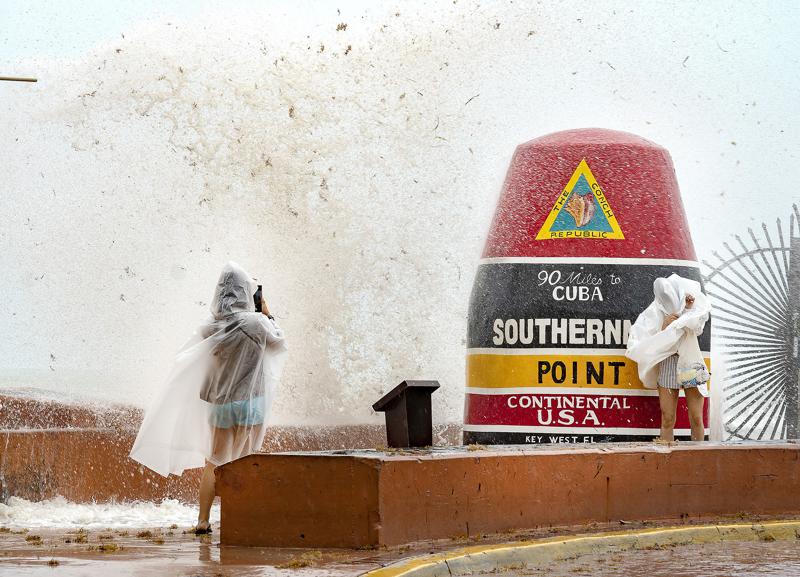Tropical storm warning for parts of Florida, Cuba, Bahamas
FORT LAUDERDALE, Fla. (AP) — Tropical storm warnings were issued Friday for much of the Florida peninsula, Cuba and the Bahamas as a system that battered Mexico moves through the Gulf of Mexico, killing at least two in Cuba and bringing threats of heavy rain and wind for the weekend.
The National Hurricane Center in Miami said the storm once known as Agatha in the Pacific Ocean will be known as Alex in the Atlantic Ocean basin, once it reaches tropical storm status.
A Friday evening advisory from the hurricane center said the storm had maximum sustained winds of 40 mph (65 kph), just above the tropical storm threshold but it remained labled “potential tropical cyclone one” because it had few other characteristics that define such storms.
Around 11 p.m., forecasters said the system was about 185 miles (295 kilometers) southwest of Fort Myers, Florida, moving at about 12 mph (19 kph).
A Hurricane Center advisory said the system was expected to develop “a well-defined center and become a tropical storm” as it approaches Florida on Friday night and into Saturday.
In Cuba, heavy downpours brought by the system caused landslides and accidents that left two people dead in the capital, Havana, state media reported. A person was also reported missing in Pinar del Río province after falling into a rain-swollen river. The country’s Civil Defense organization said the main damages so far were to homes and the electricity system. The State electricity company said 50,000 clients were without power.
In Florida, Miami-Dade County Mayor Daniella Levine Cava said most government services, such as bus routes and trains, planned to operate as normal over the weekend. Some events have been canceled, she said, and while there is no widespread anxiety about the storm it might be best to make indoor plans.
“If it isn’t necessary to go out, it’s probably better to stay home,” Levine Cava said at a news conference Friday.
The mayor added that canal levels in South Florida have been lowered to minimize flooding from heavy rains.
The storm warning affects both Florida’s Gulf Coast and Atlantic Coast, from just below Tampa Bay and Daytona Beach to the Florida Keys and Dry Tortugas. Parts of Cuba, including the provinces of Pinar del Rio, Artemisa, La Habana, and Mayabeque, and the northwestern Bahamas were also under a warning with tropical-storm-force conditions expected within 36 hours.
The Atlantic hurricane season officially began Tuesday. This is an unusually early start to the storm season but not unprecedented for Florida.
The National Hurricane Center predicts that rainfall up to 10 inches (25 centimeters) is possible in South Florida, including the Florida Keys. The storm is not expected to produce huge winds or major storm surge. But local flooding is likely and winds could be somewhat strong.
“Heavy rains will begin to affect South Florida and the Keys Friday and continue through Saturday,” the Hurricane Center said in an online post. Also predicted is storm surge and flooding, the severity of which depends on the timing of tides.
Florida Gov. Ron DeSantis said the forecast was somewhat unusual in that substantial rains were expected in southwestern Florida on Friday and windy but drier conditions on Saturday. “The rain is actually beating the wind” instead of the two coming together, he said.
“No one’s going into emergency posture” yet, DeSantis said, but authorities would monitor for a strengthening storm. “We’ve got to be ready no matter what.”
Some cities and counties across Florida’s coastal and low-lying areas, including Pembroke Pines and Miami-Dade County, were offering sandbags to residents to shore up their homes Friday morning.
As a Pacific storm, Hurricane Agatha caused flooding and mudslides that killed at least 11 people and left 20 missing in Mexico, officials said. It caused rivers to overflow their banks and swept away people in homes, while other victims were buried under mud and rocks.
Agatha made history as the strongest hurricane ever recorded to come ashore in May during the eastern Pacific hurricane season since 1949. Climate scientists say tropical systems will become more powerful and destructive because of global warming.








No Comment